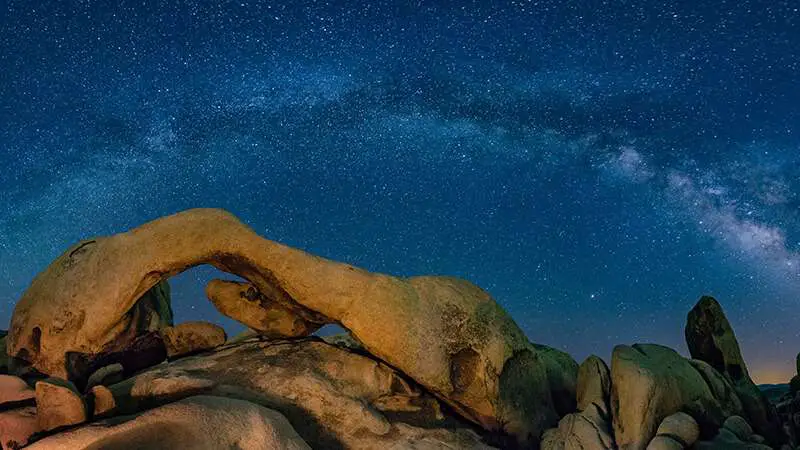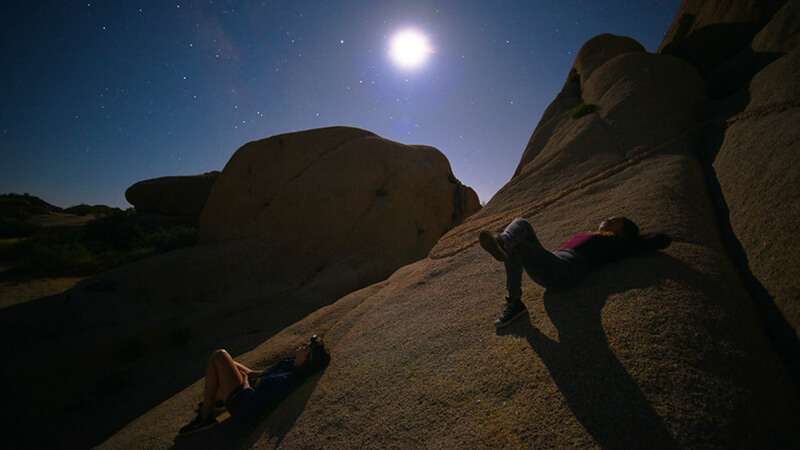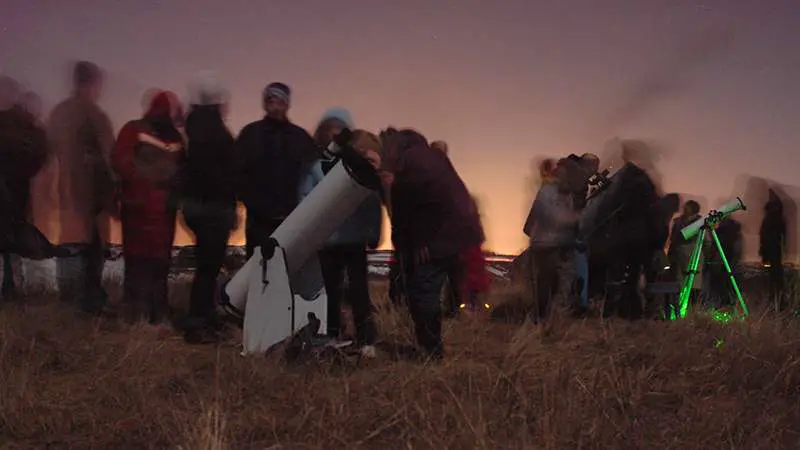Stargazing is a magical experience that allows you to marvel at the vast universe above. But what are the best stargazing conditions?
The key to an excellent stargazing experience is finding the right conditions. The weather, moon phase, temperature, wind, and cloud cover can all impact your ability to see stars and constellations.
To ensure the best stargazing conditions, you should check the weather forecast to ensure it will be a clear night sky, and cloudless. It would help if you also aimed to stargaze during a new moon phase when the sky is darker, and the stars are more visible. Or go stargazing after moonset.
Grab your telescope or binoculars, and let’s explore how to create the perfect environment for stargazing.
In this article, you get
Actionable tips to help you find the best stargazing conditions
A deep dive into the most critical atmospheric conditions, making it good to stargaze
Why location matters
The best lunar and seasonal factors to consider
A long section on helpful resources to determine your location’s current viewing conditions
By the end of this article, you’ll have a solid understanding of the best stargazing conditions to consider for your adventure exploring the night sky.
Let’s dive right in.
Best Stargazing Conditions: 5-step Quick Guide

- Finding a location far from city lights is crucial in ensuring an unobstructed view of the cosmos. The best spots are often in remote areas or public parks with minimal artificial lighting. Aim for a Bortle class 3 or 4 location. They offer dark enough skies to see the dazzling celestial sights.
- Seasons make a difference too. Fall, winter, and spring bring longer nights, making them ideal. On chilly winter nights, the sky is often crisp and clear, which helps you spot even the faintest stars.
- The weather is crucial. Calm, clear nights with low humidity are perfect for stargazing. Why? Because less water vapor means less distortion when peering up at the stars. Stay away from nights with lots of wind or cloud cover, as they can make it difficult to see the night sky.
- When it’s time to start gazing, allow your eyes to adjust to the darkness. Turning off white or blue lights will help. Instead, use red LED lights to preserve your night vision.
- Grab a handy stargazing app. It’ll help you find constellations and planets, making your celestial adventure even more exciting.
FREE STARGAZING CHECKLIST
My 5-page Stargazing Checklist will enhance your astronomical observations.
Follow this free checklist to navigate the night sky with confidence, clarity, and a sense of preparedness for a rewarding stargazing experience.

Atmospheric Weather Conditions
Seeing
Seeing refers to the steadiness of the atmosphere. When the air is stable, stars appear sharp, and twinkling is minimal. “Good Seeing” makes for ideal stargazing. To get the best view, avoid areas with rapid temperature changes, like near bodies of water or concrete surfaces.
Related article: What is Astronomical Seeing?
Transparency
Transparency is all about sky clarity, and it’s best when humidity and dust are low, as stated on accuweather.com. Clear skies make it easier to spot stars and other celestial objects. So make sure you pick a spot with excellent transparency for a great stargazing experience.
Cloud Cover
The fewer clouds, the better. You’ll want a clear night sky that has little or no cloud cover. Keep an eye on the weather forecast, and find a night when the clouds are sparse or absent. That way, the stars can truly shine.
Humidity
Low humidity is your friend when stargazing. High humidity scatters light, making the night sky seem washed out. So look for a time when humidity levels are low to appreciate the stars above.
Wind Speed
Be mindful of wind speed. Calm winds often result in better Seeing conditions since they stabilize the atmosphere. So try to plan your stargazing sessions on nights with gentle breezes or still air, and you’ll be all set for an incredible celestial show.
Location Factors

Light Pollution
To enjoy the best stargazing experience, find a spot away from city lights, as light pollution can hinder your view of the stars. Some of the best locations in the USA include sites designated as an International Dark Sky Park by the International Dark Sky Association.
Here is a short list of my favorite spots with minimal light pollution.
- Big Bend National Park
- Death Valley National Park
- Joshua Tree National Park
- Moab, Utah
- Sedona, Arizona
Altitude
Higher elevations offer better stargazing opportunities because there’s less air between you and the stars. A higher altitude keeps you above more of the atmosphere, resulting in a better view.
Geographical Features
Choose a stargazing spot with an open field of view, like a beach or a wide-open field, to see as much of the sky as possible. Avoid tall trees or structures that can block your view of some regions of the sky.
By considering these location factors, you’ll be well on your way to finding the perfect spot to marvel at the beautiful wonders of the night sky.
Lunar Cycle

Understanding the lunar cycles is vital for optimal stargazing.
Let’s look at how moon phases can impact your clear night sky views.
Moon Phase
A new moon is invisible from Earth, creating the darkest sky of the month. This moon phase is the perfect opportunity for us amateur astronomers to spot stars and the Milky Way.
On the other hand, a full moon brightens the sky and makes it more challenging to see faint celestial objects. But don’t worry, the moon’s details can be fascinating too, such as observing the craters and mountains on its surface.
The light it emits varies as the moon goes through its phases. Monitor a lunar phase calendar to plan your stargazing nights according to the moon’s waxing and waning cycles. Choose nights with a new or thin crescent moon.
Alternatively, ensure you go stargazing after moonset. Also, read my article Can You Do Astrophotography with a Full Moon?
Seasonal Factors
Stargazing conditions change throughout the year, and knowing about these seasonal factors can enhance your astronomy experience.
Let’s explore some key aspects of stargazing tied to the different seasons.
Milky Way Season: Galactic Center

From late spring until early fall, the brightest section of the Milky Way, known as the Galactic Center, becomes visible to stargazers.
Its dense concentration of stars creates a stunning display, making it the best time to gaze at our home galaxy.
On clear nights away from city lights, you’ll see an awe-inspiring celestial river stretching across the sky.
Constellations
Each season brings a new set of constellations to explore.
For example, winter presents the dazzling Orion with its prominent three-star belt, while summer introduces the famous Big Dipper.
By familiarizing yourself with these seasonal constellations, you’ll always have a celestial road map to guide your stargazing sessions.
Meteor Showers
Meteor showers are annual events that provide thrilling celestial spectacles.
For example, the Perseids grace the sky in August, while December hosts the Geminids.
Note these events on your calendar to experience nature’s fireworks lighting the night sky.
Equipment for Stargazing
You’ll need good gear to enjoy stargazing fully, so let’s go over some essentials:
Telescopes

Having a telescope is a game-changer for starry nights. Look for one that’s easy to use and portable, like a reflector telescope. With this nifty tool, you can explore galaxies far, far away. Just remember, practice setting it up during daylight so you’re ready to go when night falls.
Binoculars
Pay attention to the power of binoculars. Handheld ones with 50x magnification are fantastic for getting started. They’re lighter, easier to carry, and great for quick night sky views. Prop them on a tripod for added stability and a more comfortable experience.
Helpful Websites and Apps
Here are some excellent resources to help you determine the stargazing conditions:
Clear Night Sky
The Clear Sky Chart website forecasts the sky conditions for the next 96 hours. The website is specifically intended for amateur astronomers and features charts for thousands of observing sites in North America.
The chart predicts hourly cloud cover, atmospheric transparency, and seeing, which is the steadiness of the air that allows you to see fine detail on planets through a telescope. As you read the chart from left to right, the blue blocks indicate when the sky will likely be clear and dark.
If you find the charts useful, you can sponsor the website for more frequent updates and features.
Scope Nights
Scope Nights is an astronomy app that provides accurate and detailed stargazing weather forecasts worldwide.
The app has provided the amateur astronomy community with reliable forecasts for over five years. It uses a combination of global and national weather forecasts to give the best stargazing forecasts available.
Scope Nights is an indispensable tool for astronomers, from amateur stargazers to astrophotographers with specific requirements for observing. The app automatically shows stargazing weather for your current location and finds stargazing forecasts for any location worldwide.
Astrospheric
Astrospheric is a website and app that provides advanced weather tools for astronomers in the continental US and Canada. It offers a high-quality forecast of sky conditions for the next 96 hours, including hourly cloud cover, atmospheric transparency, and seeing.
Astrospheric updates four times a day and generates a forecast for your exact location, dynamically taking advantage of high-resolution data to get you the best results. It also offers high-quality map overlays to visualize the data and constantly upgrades its astronomy variables to reflect current conditions better.
Astrospheric is different from other services like Clear Sky Charts in that it processes raw model data from the CMC 4 times a day and generates a forecast for your exact location, among other functional differences.
Weather Underground
Weather Underground provides users with various weather-related data and tools, including current conditions, forecasts, radar maps, visibility maps, temperature maps, and more.
The website’s forecasts are generated from their proprietary forecasting system, BestForecast, which leverages the vast amount of neighborhood weather data they get from their community. This system uses the most innovative forecast models and cross-verifies their output with all localized data points.
Weather Underground offers the largest network of more than 250,000 personal weather stations. It provides users with the most local forecasts based on weather data points.
Accuweather
AccuWeather is a global weather and leading digital media company that provides weather-related data and tools to users worldwide. The website offers various services, including current conditions, forecasts, radar maps, visibility maps, temperature maps, and more.
Stargazing Etiquette
When you’re out stargazing, it’s essential to follow basic etiquette.
- Be mindful of light pollution. Use red lamps or red LEDs instead of bright flashlights, as red light affects night vision the least. This way, you won’t distract fellow stargazers and maintain your view of the night sky.
- Always respect your surroundings. Keep noise to a minimum, and clean up after yourself. There’s a helpful saying: Take only pictures, leave only footprints. In other words, pack any trash you generate and don’t leave any mess behind.
- Be courteous to others sharing the sky with you. Offer to share your telescope or binoculars and let others have their turn.
By practicing these stargazing etiquette rules, you and everyone else will have a star-filled, memorable time!
Also be sure to be safe while stargazing.
Frequently Asked Questions
How do you know if it’s a good night for stargazing?
If you want to know if it’s a good night for stargazing, check the weather forecast to ensure it will be clear and cloudless.
You can also check the moon phase to see if it will be too bright for stargazing. You can use a stargazing app to see what constellations and planets will be visible in the sky that night.
Is humidity bad for stargazing?
Humidity can be bad for stargazing because it can cause the air to be hazy, making it difficult to see stars and constellations. Humidity can scatter light and make it appear less clear.
However, stargazing can still be enjoyable if the humidity is low and the air is clear. It’s essential to check the weather forecast before going stargazing to ensure low humidity levels.
What moon phase is best for stargazing?
The best moon phase for stargazing is during a new moon when the moon is not visible in the sky.
The moon’s light can wash out the light of the stars and make it harder to see them. During a new moon, the sky is darker, and the stars are more visible. However, stargazing during other moon phases, such as a crescent or quarter moon, is still possible.
It’s essential to check the moon’s phase before stargazing to see how bright it will be.
Does temperature affect stargazing?
Temperature can affect stargazing because if it’s too cold, you may not want to stay outside for a long time. It’s important to dress warmly and bring blankets or chairs to sit on while stargazing.
Additionally, the temperature can affect the clarity of the air, which can impact stargazing. Cooler temperatures can cause the air to be clearer and less hazy, making it easier to see stars and constellations.
Is wind bad for stargazing?
Wind can be bad for stargazing because it can cause the air to be turbulent, making it difficult to see stars and constellations. The movement of the air can cause the stars to twinkle and blur, making it harder to focus on them.
Stargazing is more enjoyable if the wind is mild and the atmosphere is clear.
It’s important to check the weather forecast before going stargazing to see how windy it will be.
How cloudy is too cloudy for stargazing?
Clouds can obstruct the view of the stars and constellations, so it’s best to have clear skies for stargazing. A few scattered clouds can add to the visual interest of the sky, but if the sky is mostly cloudy, it will be challenging to see anything. It’s best to wait for a night when the sky is clear and cloudless for optimal stargazing.
Is summer or winter better for astronomy?
Both summer and winter can be good for astronomy, depending on what you want to see. In the summer, the Milky Way is more visible. In the winter, the air is clearer, and the nights are longer.
What hour is best for stargazing?
The best hour for stargazing begins during astronomical twilight, about an hour after sunset when it’s near total darkness. During this time, the sky is dark enough to see stars and constellations, but there is still some light to help you navigate.
It’s essential to check your location’s astronomical twilight time before going stargazing.
Additionally, it’s necessary to give your eyes time to adjust to the darkness, which can take about 20 minutes.
Summary: star gazing conditions
Thank you for reading my article “Best Stargazing Conditions.” Now you know the recipe for a perfect stargazing night.
Aim for when the moon is less bright, such as during the two weeks around the new moon phase. Check the weather so you don’t face unexpected clouds or fog.
Find a remote location far from city lights and preferably at a higher altitude. A good site will help you escape light pollution and haze, making the stars shine brighter for you. Mid-altitude spots are better, as they balance better sky visibility and maintain enough oxygen for comfortable viewing.
As you gaze up at the sky, allow your imagination to explore the vast cosmos and marvel at the beauty of the stars.
Share these stargazing tips with friends and family so that everyone can enjoy the magic of the clear night sky together. The best stargazing conditions can make a difference when enjoying the cosmos.
Read additional articles in my Night Sky series:




